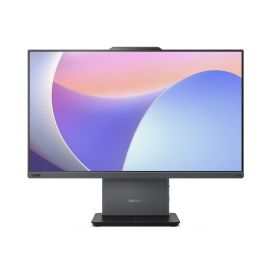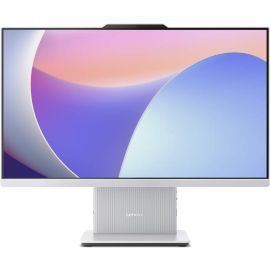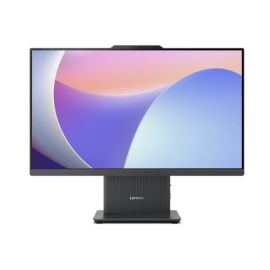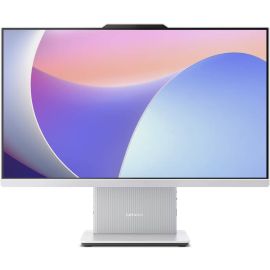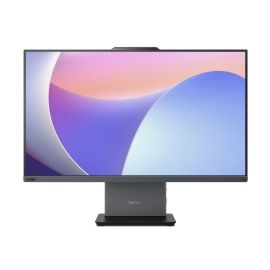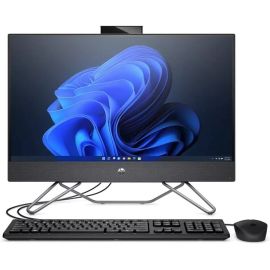

Best ( AiO) All-in-one Desktops Deal at Online! Godukkan computer Desktop Sale and Deals!
Buy Computer Desktop Online on the best deal at Godukkan in Dubai!
AIO desktop all-in-one desktop is a form of computer system that integrates the necessary aspects of the typical desktop computer into one desktop computer. They are intended to give the user a miniaturized and slim software experience, they usually have all of the following components on board in one case:
Monitor: There is no need to have an external monitor because the AIO desktop has an in-built display screen as the main screen. Such screens are available in different sizes, between 21 and 34 inches or bigger, and have the potential to provide high-resolution quality of display, like Full HD or 4K, to give a clear view of the screen.
Central Processing Unit (CPU): This is the brain of the computer that executes instruction and calculates. The CPU itself will usually be in the actual unit itself, usually behind the main monitor or the bottom of the chassis.
Memory (RAM): RAM (Random Access Memory) is temporary space where the data which is being used currently is stored by the computer. AIO desktops have different levels of RAM and it normally varies, with some having 4GB to 32 GB or even more, depending on the model and the application of the product.
Storage: all-in-one (AIO) desktops come with storage facilities such as a hard disk drive (HDD) or solid-state drive (SSD) to hold the operating system and programs as well as data used by the user. SSDs are quicker, more dependable than HDDs and most AIOs now include SSDs to enhance their performance.
Graphics Processing Unit (GPU): All-in-one (AIO) desktop PCs come with a dedicated GPU or integrated graphics, in case of GPUs, to process the graphics-intensive operations, i.e., gaming, video editing, and 3D rendering. Others AIOs even provide discrete GPUs to increase performance.
Input Devices: In most all in one (AIO) desktops, the keyboard and the mouse come built-in, but it is possible to attach an external keyboard and mouse in case one wishes to do so. Others also have touchscreen input capability.
Webcam and MicrophoneEnhancement A webcam and microphone is a common feature in all-in-one (AIO) Computers, due to this it is desirous in video conferencing and online meetings as well as content development.
Speakers When all-in-one (AIO) desktops have integrated speakers, they might be used to play audio; speaker quality may differ as well as audio features.
Ports and Connectivity: all-in-one (AIO) PCs have numerous ports to hook devices and accessories. There are USB, HDMI, audio jacks, Ethernet, and Wi-Fi on common ports.
Operating System: all-in-one (AIO) desktops are mainly windows or other operating systems such as macOS or linux depending on the manufacturer and model.
Design: the design of all-in-one (AIO) computers is characterized by elegance and space-efficiency. They may be fixed to a wall or can be used on a desk, thus you can declutter your workplace.
Power Supply: It has combined the power supply unit, so there is no requirement of the power brick.
AIO personal computers are well-liked products by home and office users who prefer a small and aesthetically beautiful computer system without various peripheral devices taking space. They will work well with numerous tasks namely productivity, entertainment, and creative work, and their performance may also differ based on concrete hardware setup.
the following are additional facts concerning all-in-one (AIO) desktops:
Touchscreen Displays: Most the all-in-one (AIO) desktops have touchscreen displays, enabling them to interact with the computer by tapping, swiping, or pinching the screen. This attribute is particularly common in all in one (AIO), designed to be used in creative work, presentations and interactive kiosks.
Upgradability: all-in-one (AIO) desktops are frequently less upgradeable than desktop towers. Their small and built-in design makes such components as the CPU and the GPU not replaceable and upgradable, and RAM and storage upgrades to be restricted. When buying an all-in-one (AIO), it is must to think about your computing requirements in the future.
AIO vs. Traditional desktops: all-in-one (AIO) desktops occupy less space as compared to traditional desktops that consist of a desk top tower. They can be sued by people who have a small space or someone who likes a clean and clutter-free workspace. The conventional desktop towers, however, have much broader possibilities of upgrading and are commonly more popular among gamers and enthusiasts.
all-in-one (AIO) vs. Laptops: all-in-one (AIO) desktops have similarities with laptops in that because of their design they are very compact and can be carried around as a single unit. Nevertheless, AIOs have larger screens, more powerful processor, and cooling solutions, in comparison with laptops: this means one can use an AIO to perform higher workload tasks.
Price Range: all-in-one (AIO) desktops come within a large price range depending on the brand; specifications and features. The most affordable models are of entry-level, whereas the most advanced ones with powerful CPUs, discrete GPUs, and large displays can be rather expensive.
Applications: The all-in-one (AIO) desktops are cross-purposed and it is applicable in many applications such as:
Productivity: all-in-one (AIO) is very good in office usage, word processing, web surfing and multitasking.
Entertainment: they can become media centers to watch movies, stream content; casual games can also be played.
Creativity: AIOs using high-performance GPUs can be used in engaging in graphic designs, video editing, and 3D modeling.
Gaming: Gaming AIOs are currently not as popular as gaming laptops or desktop towers but there are some that can actually play even the latest games on acceptable settings.
Manufacturers: AIO desktops are also manufactured by such Sony Ericsson computer producers as Apple (iMac), Dell (XPS All-in-One), HP (Envy All-in-One), Lenovo (IdeaCentre), and many others. All companies have various models, each of them with various specifications and prices.
Maintenance: in general, AIO desktops can be easy to install and maintain. They also are installed with very few cables and are neat which makes cable management easier. They however are designed in an integrated manner thus bringing about a possibility of repairs and component upgrading through professional servicing and in the worst case scenario, replacing the unit.
To select an all-in-one (AIO) desktop, pay attention to your personal computing requirements, financial opportunities, as well as the size of the display; the performance level, and design. Learn about various models of the well-established manufacturers and conduct a comparative research to get the AIO that will be most appropriate to your needs.
the following are more points of consideration and benefit of all-in-one (AIO) desktops:
Energy Efficiency: all-in-one (AIO) desktops are usually more energy efficient than normal desktop towers, since many of them incorporate laptop parts, such as power conservation CPUs and LED monitors. This may lead to electricity costs savings in the long-term perspective.
Get at Godukkan uae now.
Chat With Us
- Guest Chat
- Login Chat




